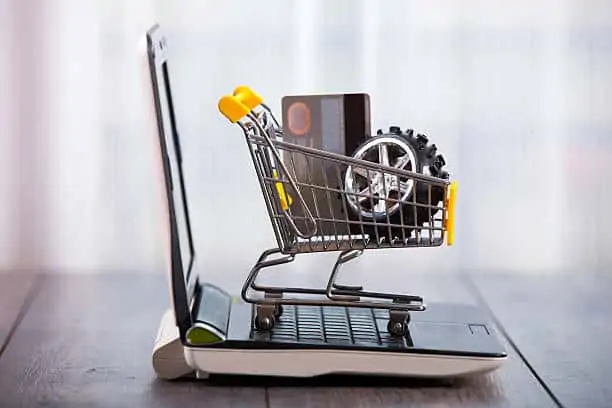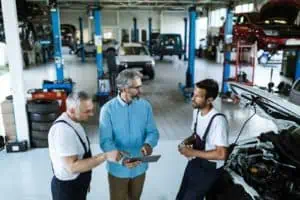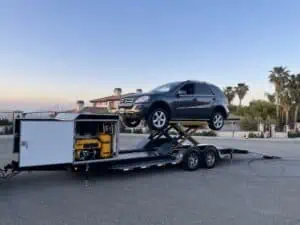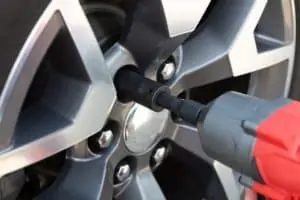Dealership Fixed Ops Never Focused on Parts Retailing
The brand equity that automakers built over time never transferred to Genuine parts and service because of a refusal to focus on parts retailing. Dealership parts and service business was historically organized around a single, Genuine, product line. Customers who frequented dealerships rarely inquired about parts quality, as they understood them to be OE. This emphasized pricing, rather than features and benefits, as the central discussion between dealers and customers.
The Aftermarket Focused Exclusively on Parts Retailing
The aftermarket took the opposite approach: building brand equity around parts and developing sales and marketing strategies designed to accommodate diverse customer needs. They operated their businesses using sound retail principles, leaving their customers with the impression of having received a quality service at a reasonable price.
Dealership Fixed Ops Focus on the Wrong Parts
Most dealerships believe there is insufficient margin in basic maintenance care services, causing them to emphasize high-margin diagnostic, repair, and warranty work. This business focus instilled in customers the perception that dealerships were not the destination of choice for general service work, such as oil changes, wipers, batteries, brakes, and tire replacements. As a consequence, the aftermarket successfully acquired much of the dealerships’ maintenance care and, eventually, repair and diagnostic business.
Poor Customer Retention Produced a Strategic Re-Evaluation
By the early 2000s, customer retention rates were so bad that most OEs decided on a new strategic path and began emphasizing two distinct strategies:
- Second line products
- Tire programs
Pairing Genuine Products with OE-Approved Products
Second line product strategies found some footing but had only limited success because they counted on a dealership weakness: parts retailing. Dealerships are more comfortable securing a sale by offering a single product at a flexible price than explaining the features and benefits of multiple products at defined prices. This situation was made worse by OEs who failed to provide sufficient retail support or integrated sales strategies.
Tire Programs Expose Dealer and OE Weaknesses
Tire programs, in contrast, were much more successful (the OE channel successfully grew its share of total tire industry sales from approximately 2% in 2000 to over 8% today) but did little to address dealer retention or change customer perceptions.
Tires are unique
Dealers wanted into the tire business until they were in; then they wanted out. Tires are very different from OE products. Most OE products – batteries, chemicals, wipers, etc. – are designed for and purchased by OEs, meaning dealers are selling parts that are supported by the OE and not widely available to their competitors.
But tires are different, they:
- Do not carry the automaker brand
- Are warrantied and supported by the tire manufacturer, not the OE
- Are available to all service providers, both OE and aftermarket
- Offer MULTIPLE fitments for a single vehicle application
- Carry very narrow margins
Dealers discovered early on that their emphasis had to change from a focus on parts purchasing to parts retailing. And this was a change they could not make on their own.
OE Tire Programs are Unique
Tire program success is defined by how many units are sold and how many dollars are generated, not by how many customers are retained or satisfied. The reasons for this statement are described below, but its accuracy is reflected in how OE tire programs are structured and supported.
Successful OE tire programs emphasize teaching dealers how to manage and sell tires: parts retailing. This strategic shift required a new program structure, a program that relies on more than just parts pricing and delivery. Given that tire margins are so thin, automakers and dealers were challenged to find an economical way to provide the necessary, ongoing support.
The solution was to find tire distributors that could also support:
- Hot shot Deliveries
- Inventory:
- Number and make up
- Storage Solutions
- Administration
- Road Hazard Claims
- Warranty Claims
- Inspection Disciplines
- Product Knowledge
- Parts Retailing Skills
OE Tire Program Suppliers are Unique
The requirement to provide focused (tire) program support places unique demands on the program administrator (product supplier); most OE program administrators play a narrow role, producing and delivering a product for a price. This price-first focus reflects the OE’s desire to deliver a part with sufficient margin to generate dealer interest and customer sales. Tires do not carry traditional margins, supporting the notion that the shift to tires was strategic.
The Successes and Failures of OE Tire Programs
So, OE tire programs have been very successful in:
- Getting dealers in and keeping them in the tire business
- Helping dealers dabble in (tire) parts retailing
- Selling tires
- Maintaining operationally viable margins
Where OE tire programs have failed is in impacting customer retention and satisfaction, the two factors that inspired OE tire programs. There are two main reasons for this:
- The parts retailing skills that were developed for tires were not applied to other parts, such as oil
- There is a fundamental difference between an OE dealership and an Independent Repair Facility (IRF).
The strategic difference referenced above (#2) is this: the aftermarket offers products like tires and oil to drive traffic; dealers offer tires and oil to prevent defections. This difference is significant. IRFs advertise inexpensive oil and tire services so they can establish relationships and inspect for additional needs, then use retail skills to build out repair orders.
Dealerships, on the other hand, use oil and tire services to prevent customers from starting a service relationship somewhere else. This strategy has proven challenging, for it is easier to upsell a $500 tire customer to a $50 add-on service (the IRF model) than it is to upsell a $50 service customer to a $500 add-on tire service (the dealer model).
By having to position tires as an upsell product, dealerships have undermined their strategy: instead, of building customer satisfaction, they simply reinforce the perception that they charge too much for parts and service work.
Parts Retailing Skills Need to be Developed and Integrated
Dealerships offer all the parts and services needed to capture and retain customers. What they lack is an integrated strategy that drives and processes traffic to maximize service revenues, along with customer satisfaction. Many dealerships are too busy fawning over the part or service offering of the day, rather than developing the sales and marketing skills necessary to accommodate individual customer needs.
To change this, more OE programs need to look like tire programs. And these restructured programs will need to engage with one another to ensure that the skills developed for one are applied to the others. This will serve to reorient dealerships to parts retailing, allowing them to seamlessly identify and address customer needs.
Over time, such a business model, organized around common and frequent service items (such as oil changes) will help drive traffic, establish relationships, sell maintenance care, retain customers, and sell more vehicles. But this can’t happen in a vacuum. It requires commitment and coordination from all three pillars of the fixed ops triad: the OEs, their suppliers, and their dealers.
3ng Consulting has effectively implemented such strategies. We know it’s not easy but we also know how to get it done. Learn more about 3NG Consulting Services.
Why Training Matters
Parts Managers often ask “What happens if I train my employees and they leave” but the bigger question is “What happens if you don’t train your employees and they stay”?
Training is good for everyone. It adds skills that make your employees more effective, improves customer satisfaction and helps your employees feel more valued in the organization. But don’t take our word for it. This article by Indeed offers the top reasons why you should train your employees.






